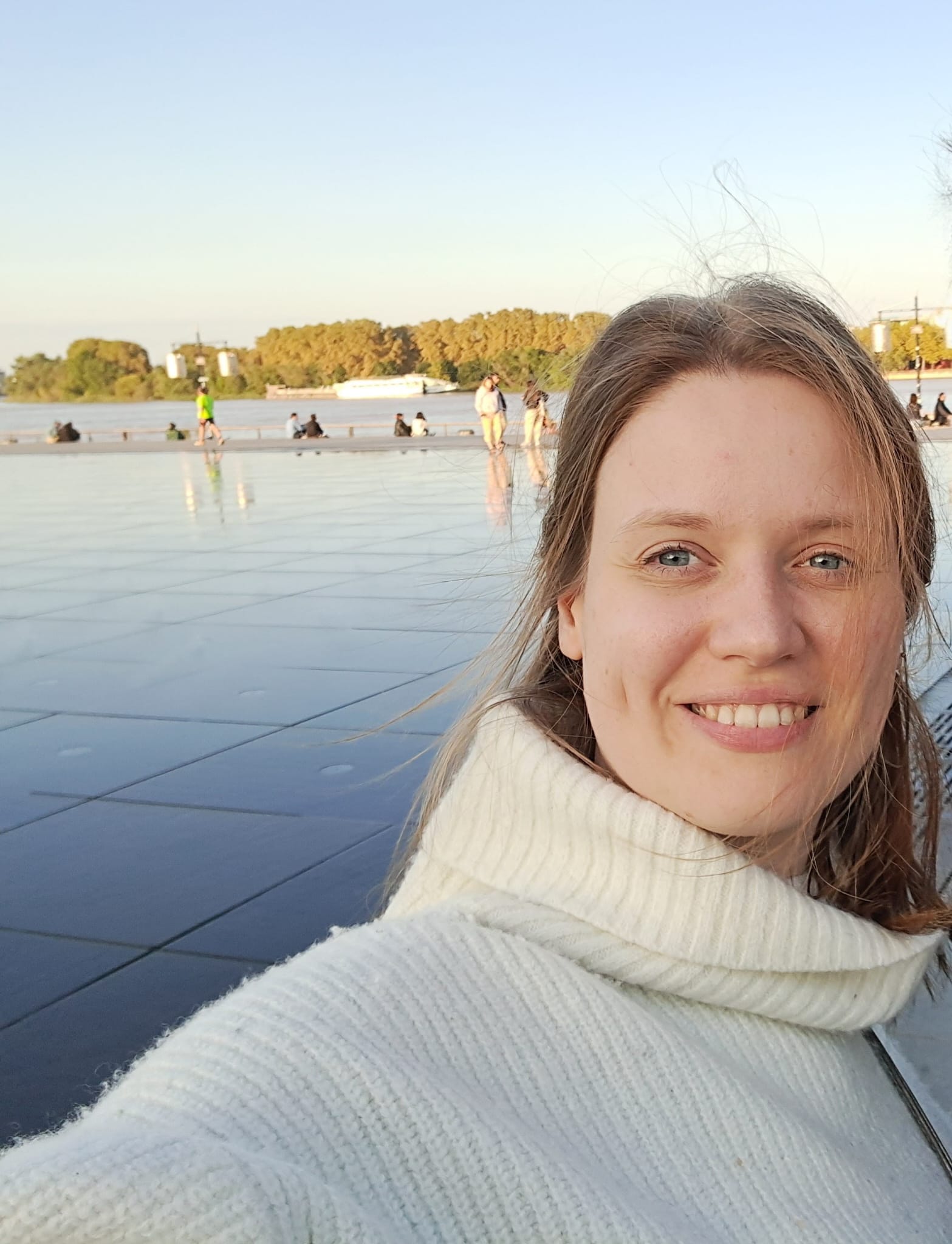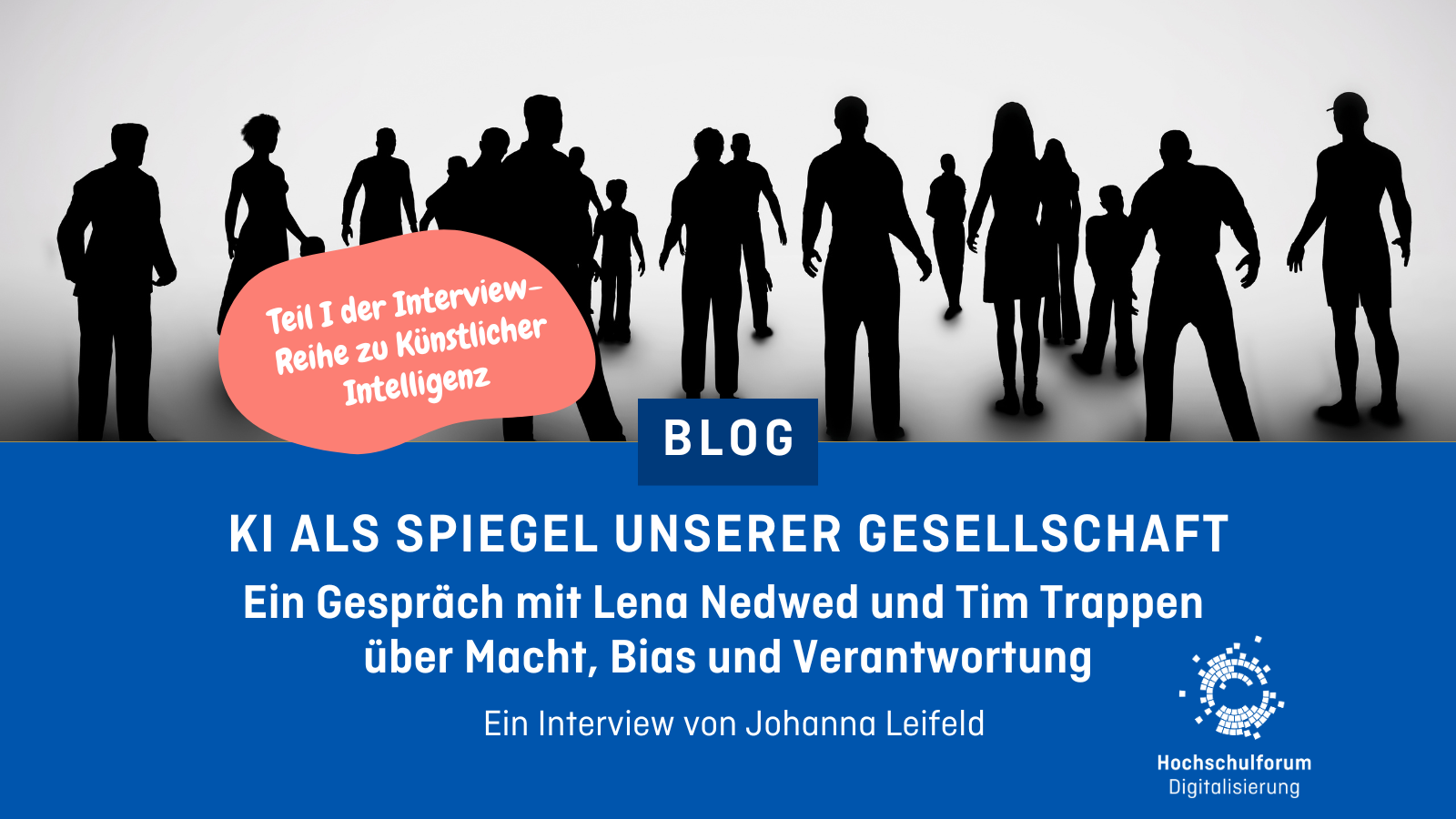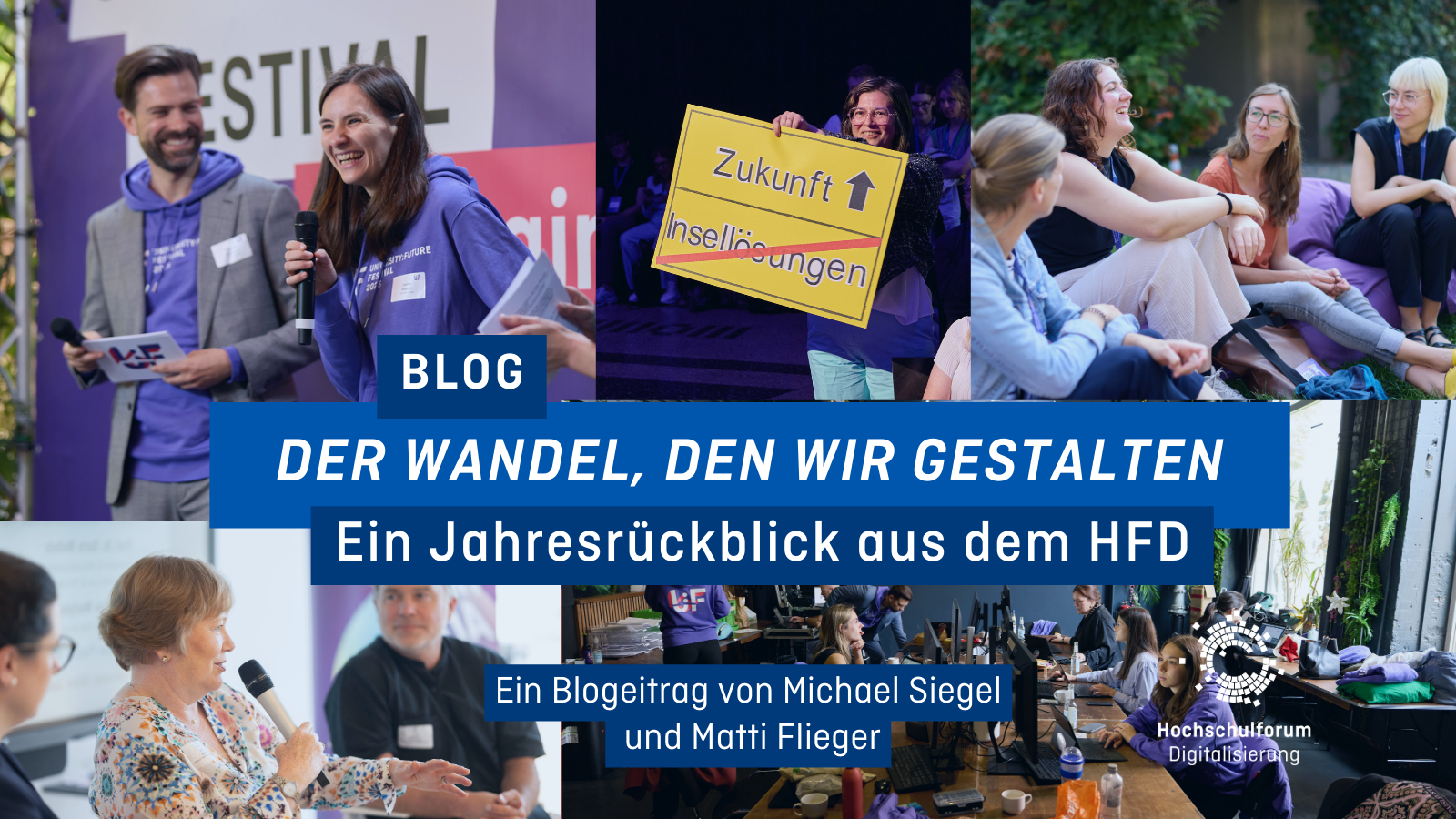Exchange of practical experience with digital teaching as a prerequisite for sustainability. The Digital Learning Map.
Exchange of practical experience with digital teaching as a prerequisite for sustainability. The Digital Learning Map.
31.07.19
“The aim is to promote the exchange of practical knowledge across university boundaries.” This is a success factor for sustainability. Johannes Moskaliuk, Bianca Diller and Elke Kümmel from the Leibniz Institute for Knowledge Media in Thübingen in the guest article.
This article has already been published in: Synergy. Specialist magazine for digitization in teaching #07, (pp. 50 – 53). We would like to thank Synergie, the journal for digitization of the University of Hamburg, for providing this article and for the permission of a republication.
This article was automatically translated using DeepL Translator. Please excuse any errors.
![Is the future sustainable enough? Photo: [https://unsplash.com/photos/Mt9DbRm2KmA Paula Prekopova] Sustainable future](/sites/default/files/images/blog/paula-prekopova-Mt9DbRm2KmA-unsplash.jpg)
How can digital teaching be sustainable? To answer this question, it is necessary to clarify what is meant by the term sustainability in the context of education. A distinction can be made between education for sustainability and sustainability for education (Stepanyan, Littlejohn & Margaryan 2013). The first perspective focuses on the sustainability of education in terms of successful teaching and its implementation, while the second perspective focuses more on economic, environmental and social aspects. Sustainability in the educational context means actively addressing current needs and constantly adapting to changing requirements (Stepanyan et al. 2013).
Sustainable digital teaching includes all functional areas of a university. For digital media and corresponding teaching/learning concepts to become a permanent part of university teaching, the organisational framework must be right (Anderson 2008). In addition to the technical equipment and corresponding training and support offers for teachers, this also includes the question of what the incentives for teachers look like, for example by crediting digital teaching to the teaching load or whether the commitment of teachers is perceived and valued by the university management.
Top-down approach to sustainability
An important strategy for sustainable digital teaching is therefore a top-down approach: the university management defines the use of digital media in teaching as a strategic goal and formulates mission statements. This also involves costs and benefits as well as the question of how existing resources can be used in a targeted and efficient manner to sustainably increase the quality of education (Stepanyan et al. 2013).
The organisational guidelines are a criterion for sustainable change. However, this change process can only be sustainable if digital teaching is practised and digital media become a natural part of university teaching (McPherson & Nunes 2006). To this end, the guiding principles of a university must become shared guiding principles (Tham 2005). The culture of a university must change and “digitize” itself from the administration to the individual teachers.
Bottom-up approach to sustainability
Top-down is not enough. Equally important is a bottom-up approach that promotes and supports innovative and disruptive concepts. How can individual teachers be encouraged to use digital media and further develop concepts independently of organisational requirements or in some cases even despite unfavourable organisational conditions?
Many teachers have not experienced digital media as a successful tool for learning and teaching in their own studies, or only to a limited extent. In addition, teachers often perceive the use of digital media as an additional effort, the didactic added value and the potential to improve their own teaching is not clear (Seaman 2009). In addition, university lecturers see themselves primarily as technical experts who want to invest little time and effort in the (media) didactic conception of their own teaching (Mayrberger 2008).
At the same time, numerous empirical research results are now available on the questions of what role digital media play in individual and cooperative learning and what effects can be expected (see Schneider & Preckel 2017). In the present studies, learning outcomes are evaluated with many heterogeneous variables (Kümmel, Irle, Moskaliuk, Kimmerle & Cress 2018). The focus is increasingly on the individual user, for example when measures such as learning effectiveness, student and teacher satisfaction, usability of new technology or perception of quality are used (Hassanzadeh, Kanaani & Elahi 2012).
A bottom-up approach makes the practical experiences of individual teachers visible and shows how digital teaching can work. The aim is to promote the exchange of practical knowledge across university boundaries.
Exchange of practical knowledge as a success factor for sustainability
This is where the Digital Learning Map comes in. The digital database, which is funded by the BMBF, offers a structured overview of practical examples that show how digital media can be used in a didactically meaningful way at universities. This makes it possible to compare different solutions, to transfer them to one’s own challenges and to promote the cross-university and cross-disciplinary application of tools and methods. Teachers can present practical examples and thus increase the visibility of themselves and their projects. In addition, the exchange of experience is stimulated.
Use of Design Patterns in the Digital Learning Map
The interpersonal transfer of practical knowledge and experience is necessary for individual and organisational learning. But how can practical knowledge be passed on to others even though it is strongly linked to the concrete situation? Can a teaching/learning concept used in chemistry also be transferred to an introductory course in German language and literature studies?
Design patterns with a given structure are a helpful tool for actually applying the experiences of others to one’s own problem. The idea comes from architecture and aims to describe successful solutions in such a way that even lay people, for example the occupants of a house, can understand and apply them. To do this, the problem or challenge must first be described in abstract terms in order to separate the concrete, situational description of the solution from the individual case. This attempts to reveal the underlying structure of the problem and the successful solution strategy.
Knowledge for action – for example on the effective use of digital media in teaching – is usually implicit knowledge (see Nonaka & Takeuchi 1995). Therefore this knowledge cannot easily be externalized. To this end, the bearer of this knowledge must first become clear about his own knowledge in order to make it available to others. Patterns for the exchange of practical knowledge have also established themselves in the pedagogical field (see Wodzicki, Moskaliuk & Cress 2011). Patterns can help to write down action knowledge. A pattern therefore describes the context in which a particular problem occurs frequently or in which a solution is highly likely to be promising. This makes implicit personal experiences explicit and thus accessible to others (Moskaliuk, Bokhorst & Cress 2016).
Structure and concept of the Digital Learning Map
The Digital Learning Map uses patterns to collect and make available practical examples of the use of digital media in teaching. Teachers can describe teaching/learning scenarios in a given structure and thus share their own experiences with others.![The right way to sustainability in teaching? The digital learning map? Photo: [https://unsplash.com/photos/KeiUIl9Lzo4 Daniel Gonzalez] The digital learning map](/sites/default/files/images/blog/daniel-gonzalez-KeiUIl9Lzo4-unsplash.jpg)
Each practical example describes which classical problems (e.g. low learning motivation of the students or high complexity of the learning content) are addressed by the teaching/learning scenario and what the concrete solution looks like. Then the teaching/learning scenario is described in more detail. Here, the degree of virtualisation is used to indicate the extent to which teaching has been digitised. This can range from a supplement to classroom teaching to pure online events. In addition, the learning-related characteristics of the digital media used are defined, for example by indicating the degree of interactivity. In addition, each description contains framework data on the project title, concrete implementation, key terms and subject groups, as well as additional information such as learning material, tools used and contact persons.
Encourage exchange and further development of actionable knowledge
This structure should make it easier for the users of the Digital Learning Map to transfer the experiences of others to their own context and to further develop their knowledge of action on the basis of the experiences of others (cf. Moskaliuk, Bokhorst & Cress 2016). The common language and structure will reveal different solutions to similar problems or similar solutions to different problems. The more abstract description of the scenario contributes to being able to comprehend experiences independently of concrete tools, subjects or contents and to learn from them. This encourages the use and further development of solutions and also enables the exchange of experiences across different contexts (e.g. university, subjects, topics). The problems, media properties and the degree of virtualisation of the teaching/learning scenario are therefore also used for the search and filter functions within the database. A direct exchange is possible via the contact data of the person who entered the practical example, the comment function and the community on e-teaching.org. Figure 1 shows the start page of the Digital Learning Map.

Add your projects to the Digital Learning Map!
The database should continue to evolve: University lecturers can enter their own practical examples of digital teaching in the database. Would you like to enter your own practical example in the database? Please download the input form from the following address: e-teaching.org/learnmap_faq. Please send the completed PDF to Bianca Diller: b.diller@iwm-tuebingen.de We will then check it and enter it on the website.
Literature
Anderson, T. (2008). The Theory and Practice of Online Learning. Edmonton: Athabasca University Press.
Hassanzadeh, A., Kanaani, F. & Elahi, S. (2012). A model for measuring e-learning systems success in universities. Expert Systems with Applications, 39 (12), S. 10 959 – 10 966. DOI 10.1016/j.eswa.2012.03.028.
Wodzicki, K., Moskaliuk, J. & Cress, U. (2010). Patterns of Social Practice: A Psychological Perspective. In Kohls, C. & Wedekind, J. (Hrsg.), Investigations of E-Learning Patterns: Context Factors, Problems and Solutions (S. 257 – 271). Hershey: IGI Global.
Kümmel, E., Irle, G., Moskaliuk, J., Kimmerle, J. & Cress, U. (2018). How learning outcomes are measured in digital learning environments in higher education. In Kay, J. & Luckin, R. (Hrsg.), Rethinking Learning in the Digital Age: Making the Learning Sciences Count, 13th International Conference of the Learning Sciences (ICLS) 2018, 3 (S. 1551 – 1552). London, UK: International Society of the Learning Sciences.
Mayrberger, K. (2008). Fachkulturen als Herausforderung für E-Learning 2.0. In Zauchner, S., Baumgartner, P., Blaschitz, E. & Weissenbäck, A. (Hrsg.), Offener Bildungsraum Hochschule. Freiheiten und Notwendigkeiten (S. 157 – 168). Berlin: Waxmann.
McPherson, M. & Nunes, M. B. (2006). Organisational issues for e-learning: Critical success factors as identified by HE practitioners. International Journal of Educational Management, 20, S. 542 – 558. DOI 10.1108/09513540610704645.
Moloney, J. F. & Oakley, B. (2010). Scaling online education: Increasing access to higher education. Journal of Asynchronous Learning Networks, 14, S. 55 – 70.
Moskaliuk, J., Bokhorst, F. & Cress, U. (2016). Learning from others’ experiences: How patterns foster interpersonal transfer of knowledge-in-use. Computers in Human Behavior, 55, S. 69 – 75. DOI 10.1016/j.chb.2015.08.051.
Nonaka, I. & Takeuchi, H. (1995). The knowledge-creating company: How Japanese companies create the dynamics of innovation. New York: Oxford University Press.
Rennie, F. & Morrison, T. (2013). E-Learning and Social Networking Handbook. New York: Routledge.
Schneider, M. & Preckel, F. (2017). Variables associated with achievement in higher education: A systematic review of meta-analyses. Psychological Bulletin, 143, S. 565 – 600. DOI 10.1037/bul0000098.
Seaman, J. (2009). Online Learning as a Strategic Asset, Vol. 2: The Paradox of Faculty Voices. Washington DC: Association of Public and Land-Grant Universities. Verfügbar unter: https://uhh.de/b5gw6 [03.04.2019].
Stepanyan, K., Littlejohn, A. & Margaryan, A. (2013). Sustainable e-Learning: Toward a Coherent Body of Knowledge. Journal of Educational Technology & Society, 16, S. 91 – 102.
DOI
10.25592/issn2509-3096.007.010
Opinions on the topic in the synergy blog
Post as Podcast
CC BY 4.0




 Lena Nedwed
Lena Nedwed 
 Michael Siegel
Michael Siegel 
 Andreas Giesbert
Andreas Giesbert 